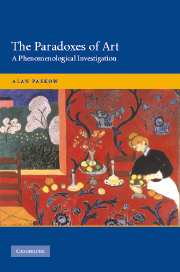4 - Why and How Painting Matters
Published online by Cambridge University Press: 27 March 2010
Summary
Paintings matter to many people. But why? As I pointed out in my Introduction, they are, after all, just images. As images, it is difficult to explain their strange hold on, their apparent magical power over, many viewers. Wittgenstein rightly warns us in paragraph 524 of his Philosophical Investigations: “Don't take it as a matter of course, but as a remarkable fact, that pictures … give us pleasure, occupy our minds.”
This chapter attempts to show how the images of painting may be plausibly regarded as like the fictional portrayals of literature discussed earlier. I wish to understand better, from a phenomenological standpoint, what occurs when we become fully engaged with the subject of a painting, that is, with what is represented, what it means to us, and why it is of significance. This requires me to reflect on what we take the depicted items in paintings, such as people or dream figures, landscapes, or formal patterns, to be about at the most basic level, that is, what their nature or being is and what, therefore, their relationship is to the everyday world, the so-called real world of people and objects, both natural and human-made. Here I will build on distinctions and conclusions that I have already drawn in Chapters 1, 2, and 3, devoted respectively to the being of fictions, the nature of our involvement with things, and the nature of our involvement with “the others.”
- Type
- Chapter
- Information
- The Paradoxes of ArtA Phenomenological Investigation, pp. 158 - 203Publisher: Cambridge University PressPrint publication year: 2004



